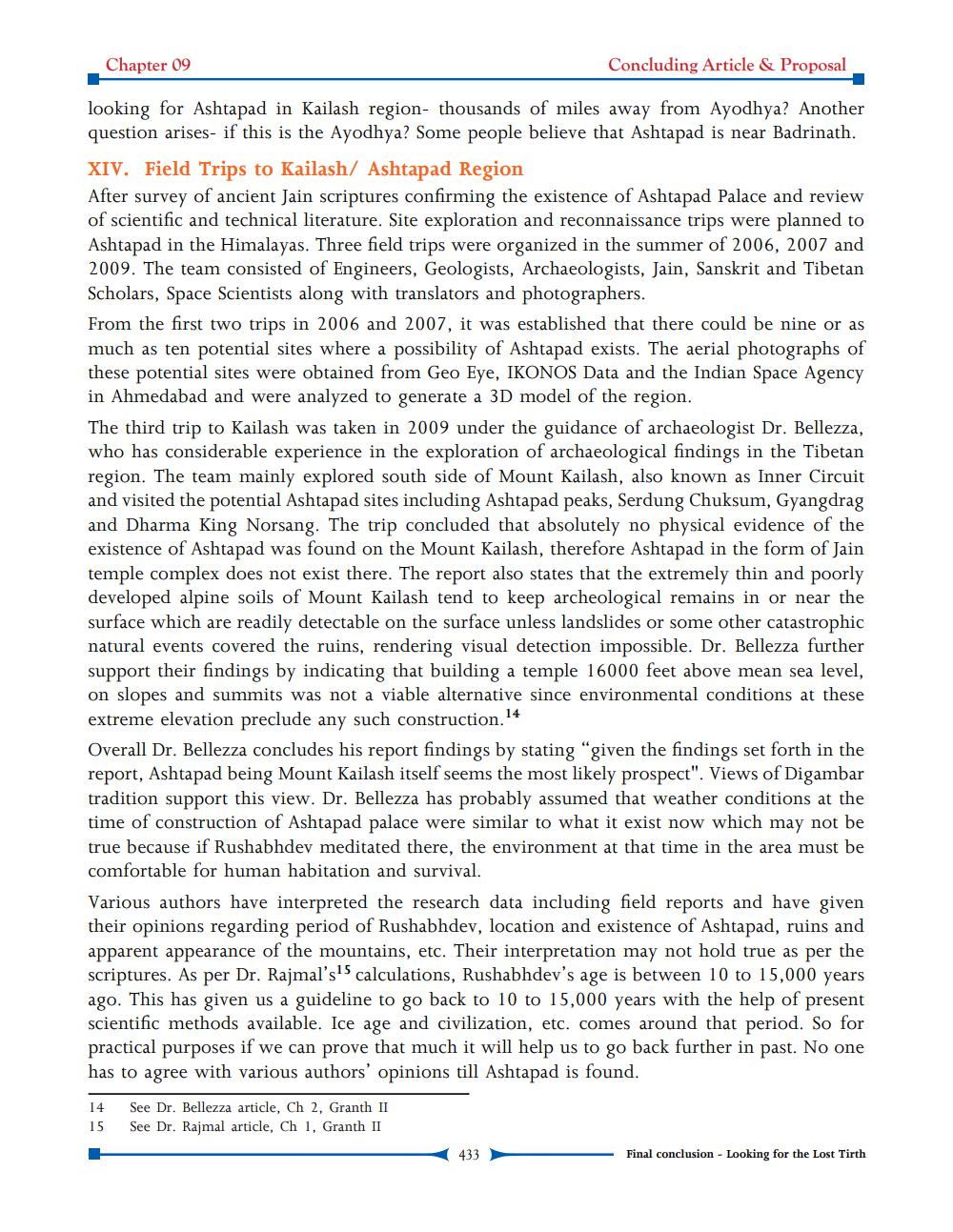________________
Chapter 09
Concluding Article & Proposal
looking for Ashtapad in Kailash region- thousands of miles away from Ayodhya? Another question arises- if this is the Ayodhya? Some people believe that Ashtapad is near Badrinath. XIV. Field Trips to Kailash/ Ashtapad Region After survey of ancient Jain scriptures confirming the existence of Ashtapad Palace and review of scientific and technical literature. Site exploration and reconnaissance trips were planned to Ashtapad in the Himalayas. Three field trips were organized in the summer of 2006, 2007 and 2009. The team consisted of Engineers, Geologists, Archaeologists, Jain, Sanskrit and Tibetan Scholars, Space Scientists along with translators and photographers. From the first two trips in 2006 and 2007, it was established that there could be nine or as much as ten potential sites where a possibility of Ashtapad exists. The aerial photographs of these potential sites were obtained from Geo Eye, IKONOS Data and the Indian Space Agency in Ahmedabad and were analyzed to generate a 3D model of the region. The third trip to Kailash was taken in 2009 under the guidance of archaeologist Dr. Bellezza, who has considerable experience in the exploration of archaeological findings in the Tibetan region. The team mainly explored south side of Mount Kailash, also known as Inner Circuit and visited the potential Ashtapad sites including Ashtapad peaks, Serdung Chuksum, Gyangdrag and Dharma King Norsang. The trip concluded that absolutely no physical evidence of the existence of Ashtapad was found on the Mount Kailash, therefore Ashtapad in the form of Jain temple complex does not exist there. The report also states that the extremely thin and poorly developed alpine soils of Mount Kailash tend to keep archeological remains in or near the surface which are readily detectable on the surface unless landslides or some other catastrophic natural events covered the ruins, rendering visual detection impossible. Dr. Bellezza further support their findings by indicating that building a temple 16000 feet above mean sea level, on slopes and summits was not a viable alternative since environmental conditions at these extreme elevation preclude any such construction." Overall Dr. Bellezza concludes his report findings by stating "given the findings set forth in the report, Ashtapad being Mount Kailash itself seems the most likely prospect". Views of Digambar tradition support this view. Dr. Bellezza has probably assumed that weather conditions at the time of construction of Ashtapad palace were similar to what it exist now which may not be true because if Rushabhdev meditated there, the environment at that time in the area must be comfortable for human habitation and survival. Various authors have interpreted the research data including field reports and have given their opinions regarding period of Rushabhdev, location and existence of Ashtapad, ruins and apparent appearance of the mountains, etc. Their interpretation may not hold true as per the scriptures. As per Dr. Rajmal'sis calculations, Rushabhdev's age is between 10 to 15,000 years ago. This has given us a guideline to go back to 10 to 15,000 years with the help of present scientific methods available. Ice age and civilization, etc. comes around that period. So for practical purposes if we can prove that much it will help us to go back further in past. No one has to agree with various authors' opinions till Ashtapad is found.
14 15
See Dr. Bellezza article, Ch 2, Granth II See Dr. Rajmal article, Ch 1, Granth II
433
Final conclusion - Looking for the Lost Tirth




